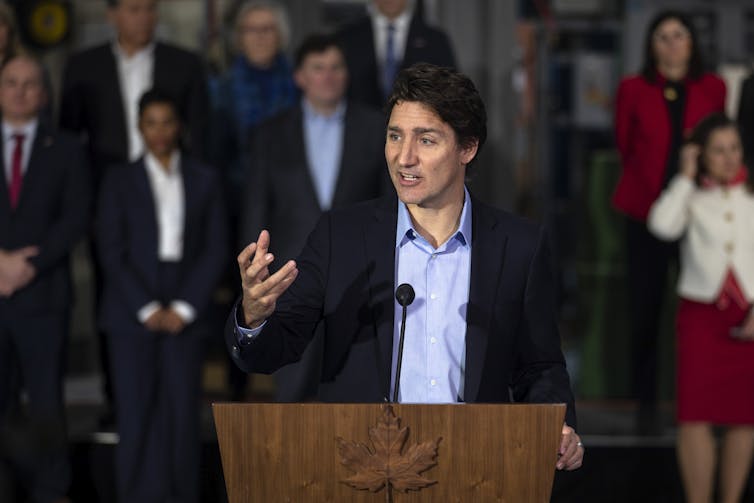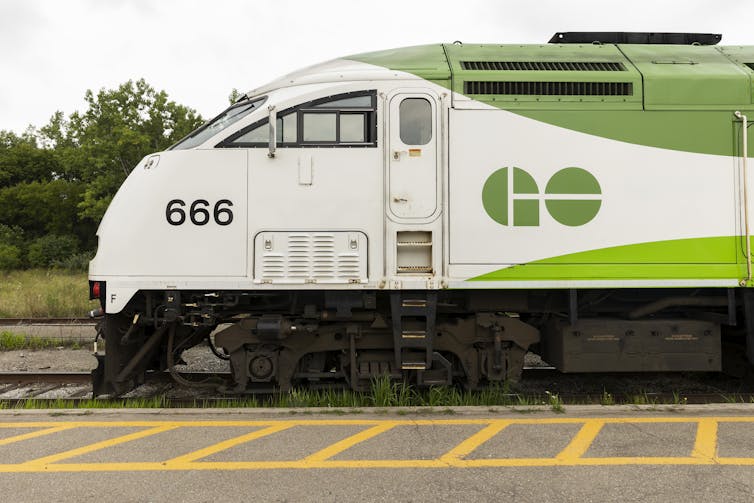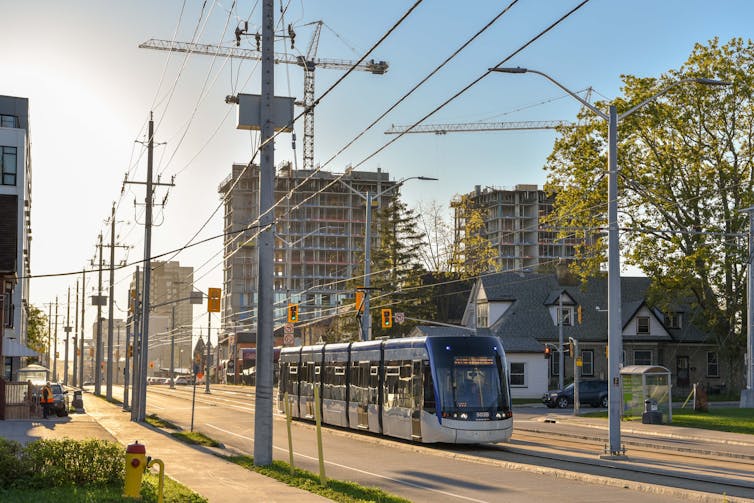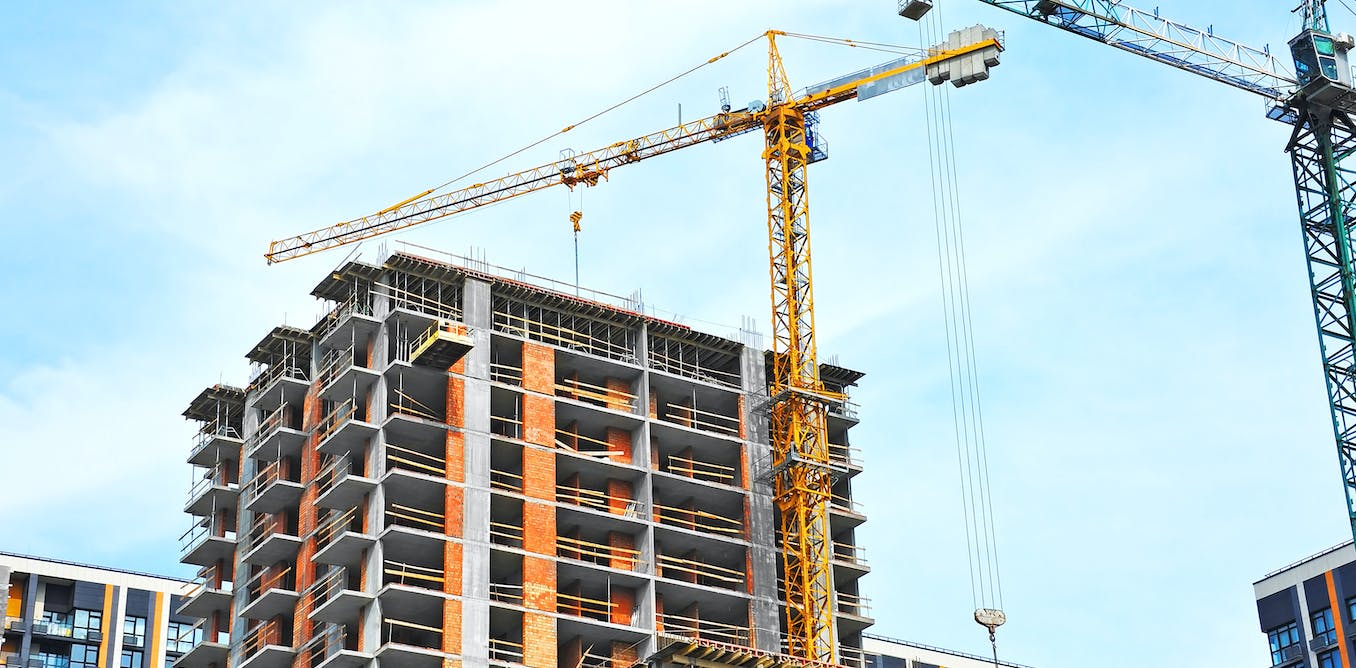On Jan. 25, Prime Minister Justin Trudeau pledged to “ensure” affordable housing is built along Hamilton’s light rail transit (LRT) route. While this is welcome news, there are many uncertainties about how this will actually happen.
Building and maintaining affordable housing near good transit is one of the biggest challenges cities face today. It’s not just Hamilton, Ont.: Toronto, Mississauga, Ont., Brampton, Ont., Waterloo, Ont., Ottawa, Québec City, Montréal, Calgary, Vancouver and Edmonton are all constructing or planning new transit lines.
However, without proactive approaches from all levels of government, gentrification and displacement will accompany these new trains.
Fortunately, there are solutions right in front of us.
Public vs. private ownership
Metrolinx, a provincial government agency, has acquired large sections of land for the construction of many of these LRTs, including in Hamilton. Once trains are running, most of this land will no longer be needed. Typically, surplus public land is sold on the open market to the highest bidder. But that’s not the only approach.
What happens to publicly owned land along new transit lines will determine whether or not they will be affordable places to live.

THE CANADIAN PRESS/Nick Iwanyshyn
If this land is sold to private developers, Canadians are unlikely to see significant amounts of affordable housing built for low- or moderate-income households.
This is a triple blow to these communities: new housing is too expensive, existing affordable housing is being lost through demolition, renoviction and gentrification, and people who rely on transit will have few housing options along routes.
But if this land is kept in public ownership, the future of affordable housing is brighter. Although Metrolinx has no history of doing so, the pieces are in place to use this publicly owned land to build the kind of housing the market is unwilling, or unable, to build.
The province could retain this land and transfer it to the Ministry of Municipal Affairs and Housing and use it for social housing. Even if the province wants to sell the land, there are possibilities.
A culture shift is needed
In Ontario, provincially owned land — including land owned by Metrolinx — is subject to the Ontario Realty Directive. This directive gives other public entities, like the federal government or municipalities, the right to acquire surplus provincial properties before they are sold on the open market.
Cities rarely exercise their option to buy surplus provincial land, partly because it takes time (and money) to do so, but also because of a culture that emphasizes the role of the private sector, rather than the public, in developing housing.
The federal government could also acquire land under the directive and build housing on it funded by the National Housing Strategy. So far, this strategy has produced very little affordable housing for households in need. A change is clearly necessary.
The provincial government can also be much more proactive. The Ontario Housing Affordability Task Force recommended that all future government land sales have a 20 per cent affordable housing requirement. Unfortunately, this recommendation has not been adopted.
In 2022, Metrolinx sold a parking lot in Port Credit — located next to a GO station, right at the start of the Hurontario LRT line — to a private developer for $64.5 million, with no requirement for any affordable housing.
Has Ontario’s housing ‘plan’ been built on a foundation of evidentiary sand?
A culture shift around provincially owned land needs to come from the top — from Minister of Transportation Caroline Mulroney, Minister of Municipal Affairs and Housing Steve Clark, and from Premier Doug Ford himself.
With the passing of Bill 23, Ford has an ambitious plan to build new homes in Ontario, but more direction is needed to shape what kind of housing gets built and for whom.

THE CANADIAN PRESS/Tara Walton
Genuinely affordable housing
The private market is very good at building a lot of small condo units, especially along new transit lines. In Waterloo, where I work, more than $4 billion has been invested along the LRT corridor. Most of this investment was made before the line opened, meaning these kinds of conversations need to happen today, not five years from now.
What the private market is not good at is building genuinely affordable housing and family-sized units for households on a range of incomes.
Not all the new housing on publicly owned land has to be social housing, though we do need a lot more of it. A recent Scotiabank report noted that even if Canada doubled its percentage of social housing, we would only be at the Organisation for Economic Co-operation and Development and G7 averages.
Within our current planning rules, the questions of what to build and for whom are left to the market. One of the few tools cities have to shape private development is inclusionary zoning, which requires a certain percentage of affordable housing be built in new developments.
Most cities have yet to establish their policies, but Bill 23 will restrict affordable housing to five per cent of units for a maximum of 25 years, with rents at 80 per cent of market rates. This approach won’t do anything for families in core housing need — households that spend more than 30 per cent of their income on shelter. It is also a far cry from the City of Toronto’s inclusionary zoning plan which called for 22 per cent of new units to be affordable by 2030.
Thinking beyond the market
When land is publicly owned, we can set the terms of development and be much more ambitious and creative. It would be possible, for example, to stipulate that new owner-occupied units be the primary residences of their owners, a model already practised in Whistler, B.C..

(Brian Doucet), Author provided
In Ontario, where a quarter of all homebuyers are investors, this would reduce demand by eliminating speculation on publicly owned land.
Cities could use their land for purpose-built rentals, with rents set at a ratio of a tenant’s income, rather than a little bit below market rates. They could also lease sites to non-profits to build supportive housing, as Kitchener recently did. Publicly owned land also plays a key role in reconciliation with Indigenous communities, who disproportionately struggle to find adequate and affordable housing.
In a housing crisis, publicly owned land should never be sold to private developers in the hopes of getting a few crumbs of affordable housing out of the deal. By assuming the private market has a monopoly on housing development, we ignore the genuinely transformative solutions that are hiding in plain sight.
Thinking beyond the market, and using publicly owned land creatively, is the only way Trudeau’s pledge to ensure affordable housing along Hamilton’s LRT corridor will actually result in housing for the people who need it.




